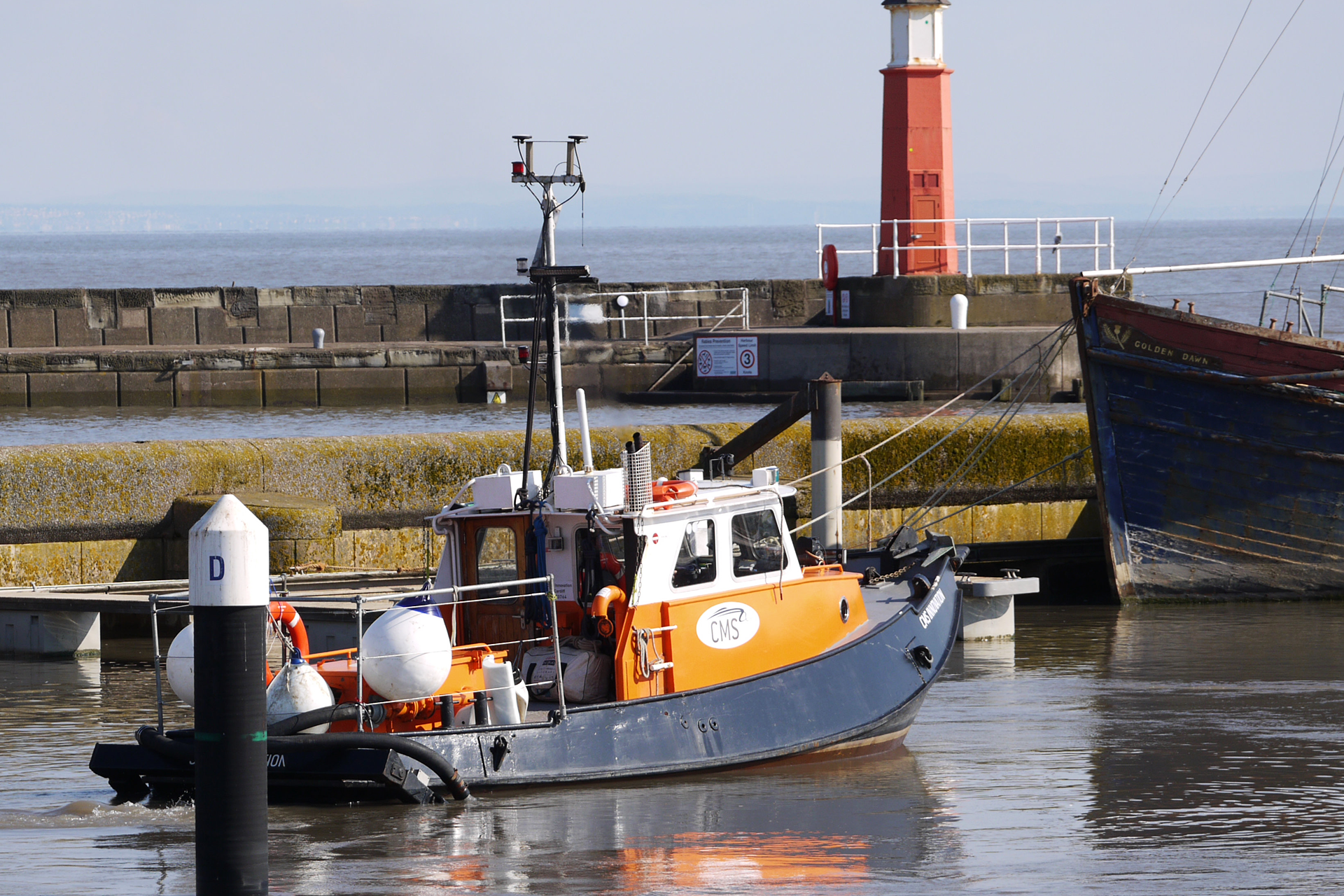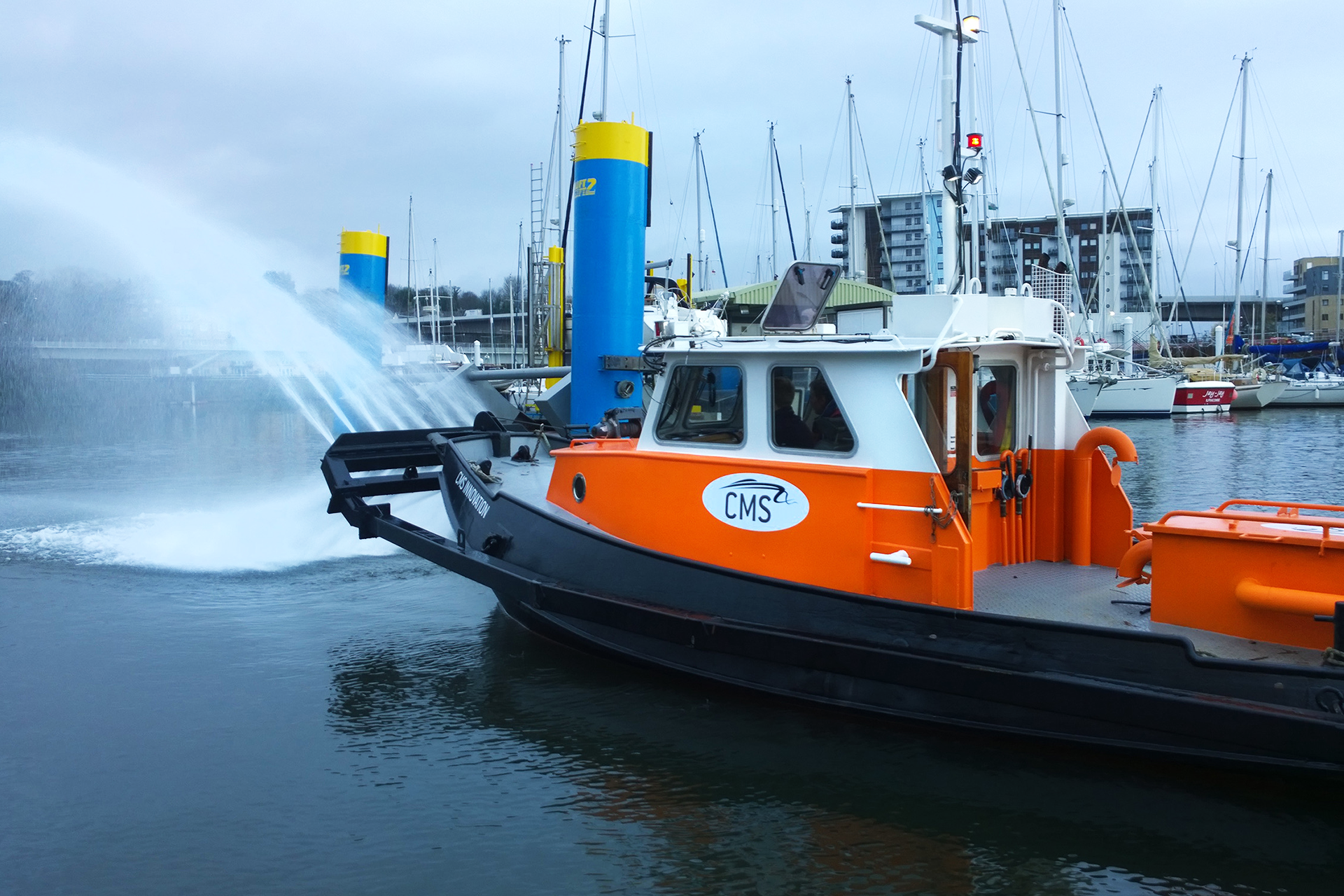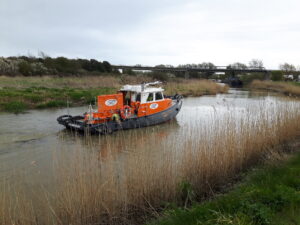Water injection dredging is an environmentally friendly, cost effective dredging technique. Our road transportable, manoeuvrable dredgers are idea for clearing siltation in a wide range of locations including marinas, harbours, ports and navigation channels.

About Water Injection Dredging
Water injection dredging remobilises sediment using the action of natural currents. It uses water pumps connected to a series of nozzles on a horizontal jet bar. The nozzles inject large volumes of water at low pressure directly onto the sediment build up. This process fluidises the sediment build up, turning it into a density current which remains close to the water bed. The sediments are then picked up by this current and able to flow horizontally out of the area being dredged.
This process eliminates the need for traditional excavation dredging methods and the subsequent transportation of the dredged material. Nature takes care of the sediment transport, making water injection dredging a cost-effective dredging technique with less impact on the environment.
Why Choose Water Injection Dredging?
- Cost-Effective: By using water to mobilize sediments, WID reduces the need for expensive extraction equipment and minimises downtime, making it an affordable solution for both large and small-scale dredging projects.
- Minimal Environmental Impact: Water injection dredging is a non-invasive technique, reducing the disturbance to aquatic ecosystems. It avoids the use of dredging techniques which can disrupt marine life and sedimentation.
- Improved Efficiency: This method can quickly and effectively dredge fine materials, like silts and muds, without creating excess turbidity or siltation that can harm water quality.
- Low Carbon Footprint: With minimal machinery and reduced transportation requirements, water injection dredging offers a more energy-efficient alternative that lowers carbon emissions compared to conventional dredging techniques.

Uses of Water Injection Dredging
- Marinas
- Underneath jetties and moored vessels
- Alongside quay walls
- In locks
- Inland waterways/canals
- Culverts
- Access channels
- Flood prevention
- Increasing depths for ship berthing
- Wind farm installations
- Levelling the water bed for pipelines and tunnel sections
- Increasing the depth of pipelines and cables
Our Water Injection Dredging Fleet
Road transportable, versatile and environmentally friendly dredgers
CMS Innovation
- Fully road transportable
- 11.5 tonnes in weight
- Quickly deployed with a crane or boat lift
- Length ~ 9.58 meters
- Width ~ 3.9 meters
- Draft ~ 1 meters
Click HERE for the full specification sheet
Coming soon...
- Excellent manoeuvrability in confined spaces
- Length ~ 12 meters
- Width ~ 4 meters
- Draft ~ 0.8 meters

Environmental Impact of Water Injection Dredging
Water injection dredging (WID) offers significant environmental advantages over traditional dredging methods, as it minimizes disruption to the surrounding ecosystem while efficiently moving sediment. This process involves transporting dredged material horizontally along the water bed, which leads to several key environmental benefits:
- Sediment Distribution: A higher proportion of dredged sediment is directed to the lower layers of the water column, where it can naturally disperse and integrate with existing sediment layers. This reduces the likelihood of sediment re-suspension in the water, which can impact water quality and marine life.
- Natural Sediment Transport: Through the creation of a density current, the sediment is naturally carried to its final deposition area by ocean or river currents. This natural transport method mimics the flow patterns of the surrounding environment, allowing the sediment to re-enter the ecosystem with minimal disturbance.
- Increased Sediment Input: The process also accelerates the rate at which sediment is deposited in the dredged area, helping to restore natural sediment dynamics and promote a healthy aquatic ecosystem.
- Dynamic Sedimentation: The rate of sedimentation in deposition areas may vary based on changing natural conditions such as current flow, tides, or seasonal weather patterns. This natural variability ensures that sedimentation remains in balance with the local environment.
- Eco-Friendly Disposal: Unlike traditional dredging methods, where sediments are often removed and disposed of off-site, water injection dredging allows the dredged materials to remain within the ecosystem, enhancing the sustainability of the dredging process.


